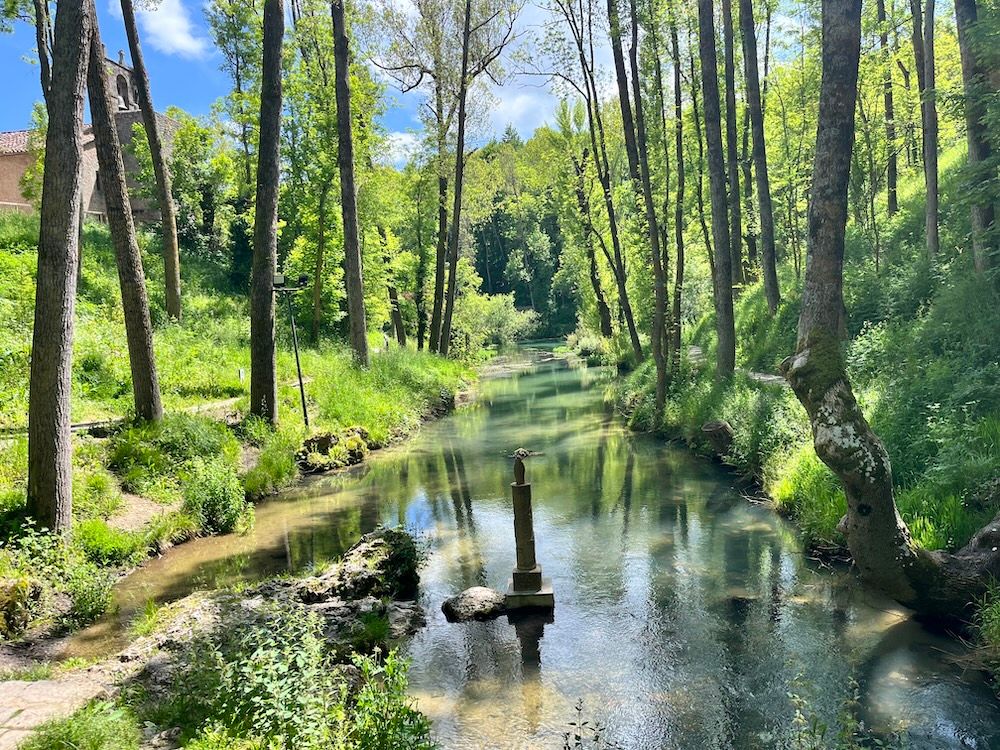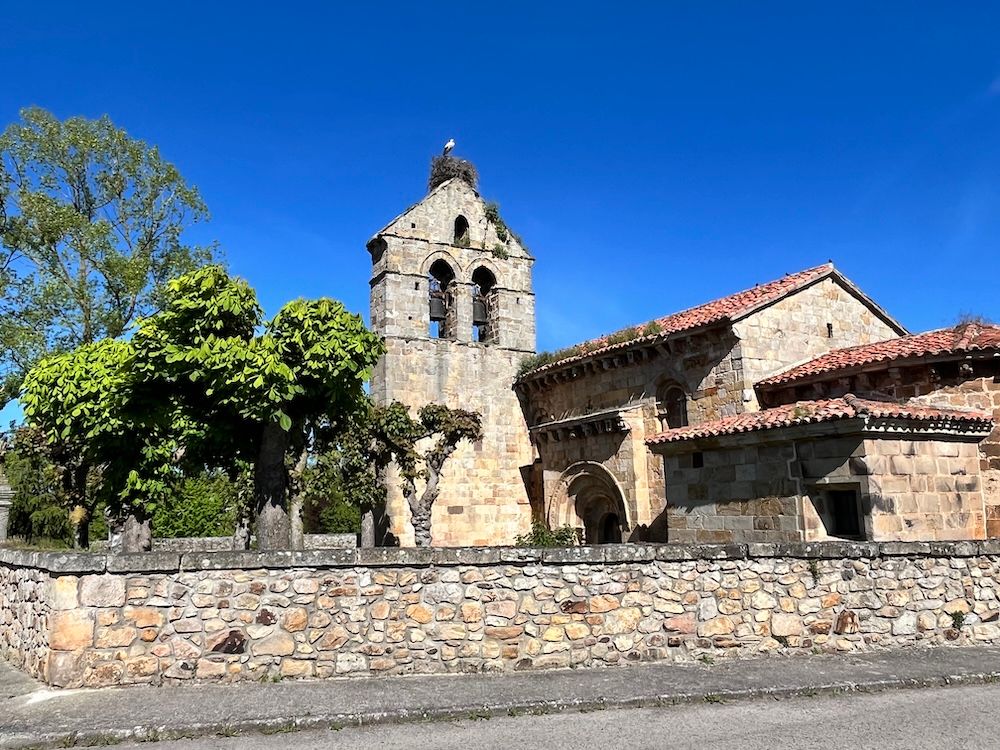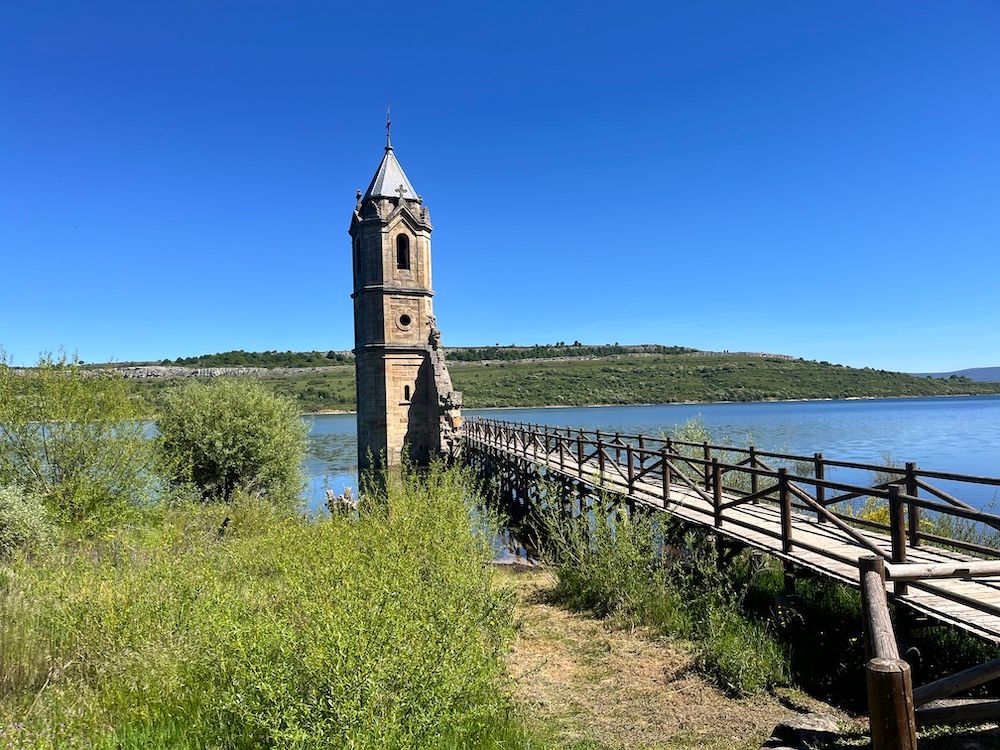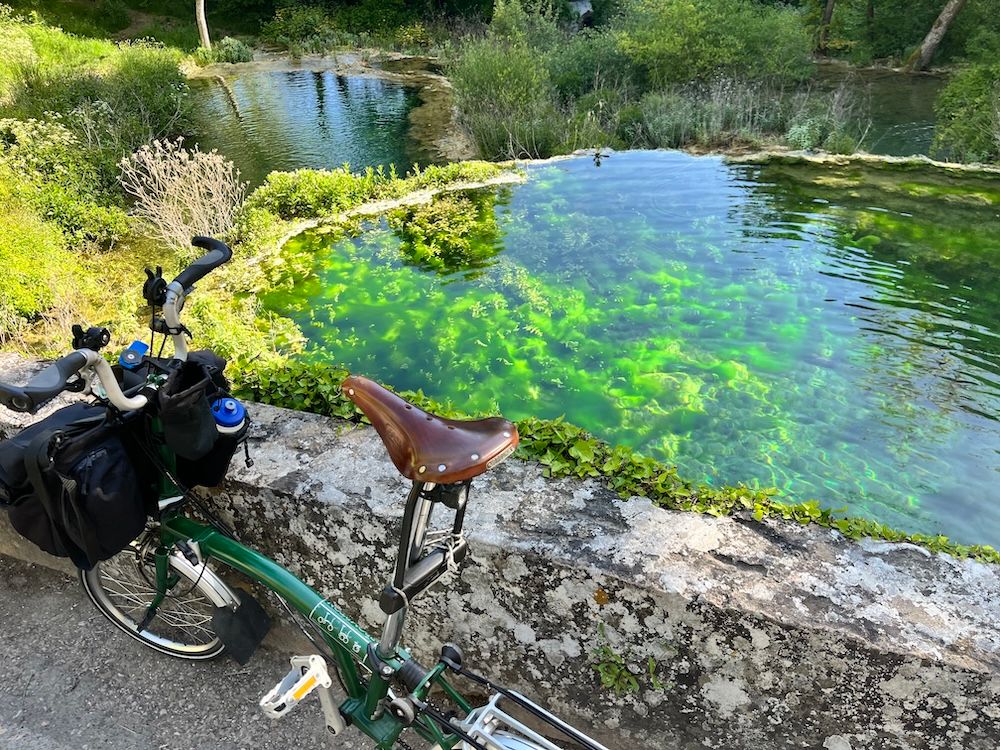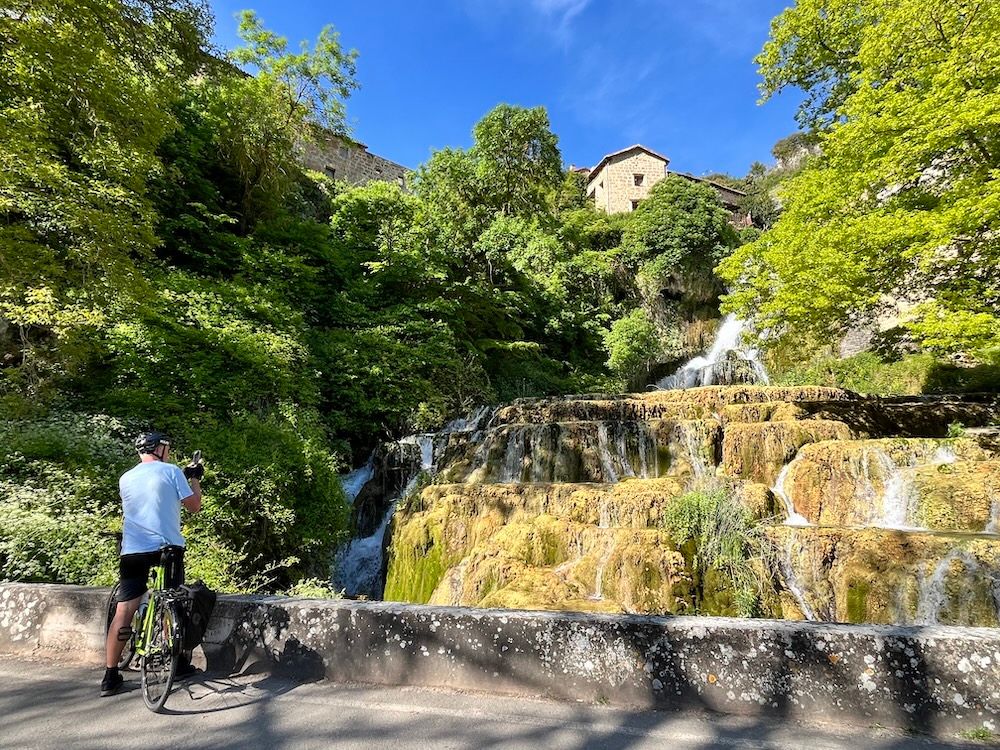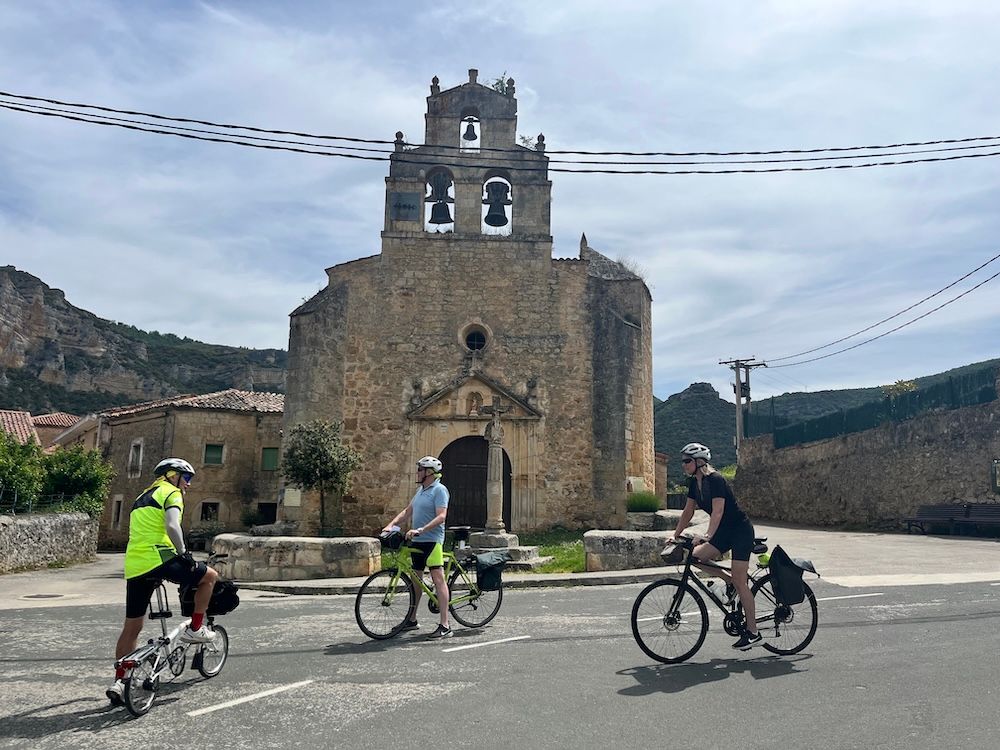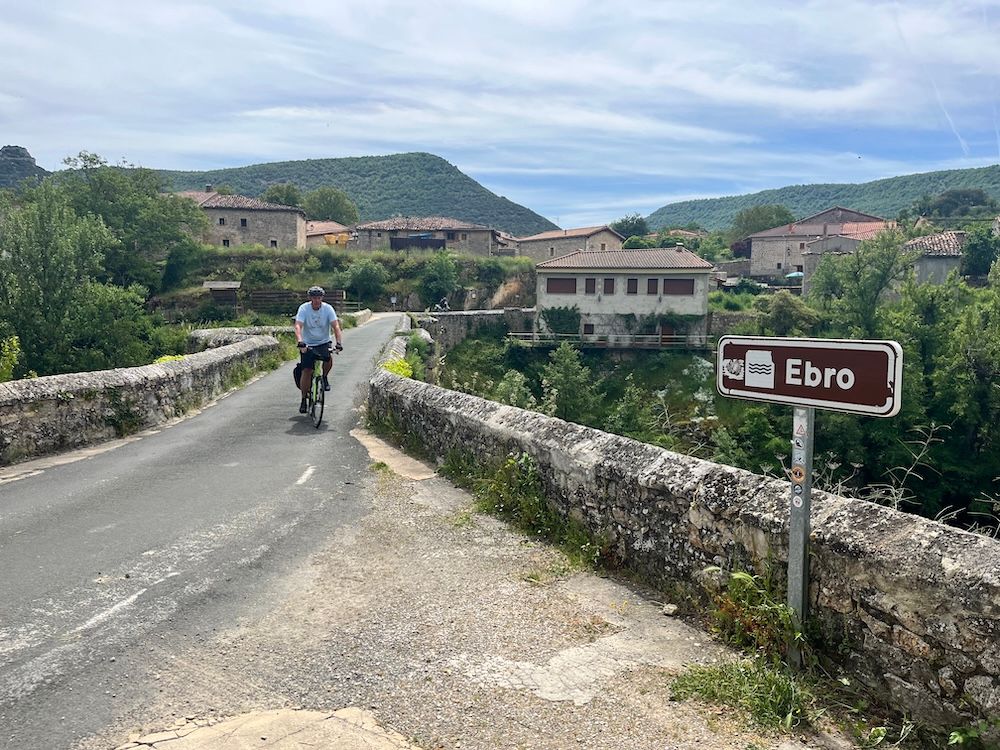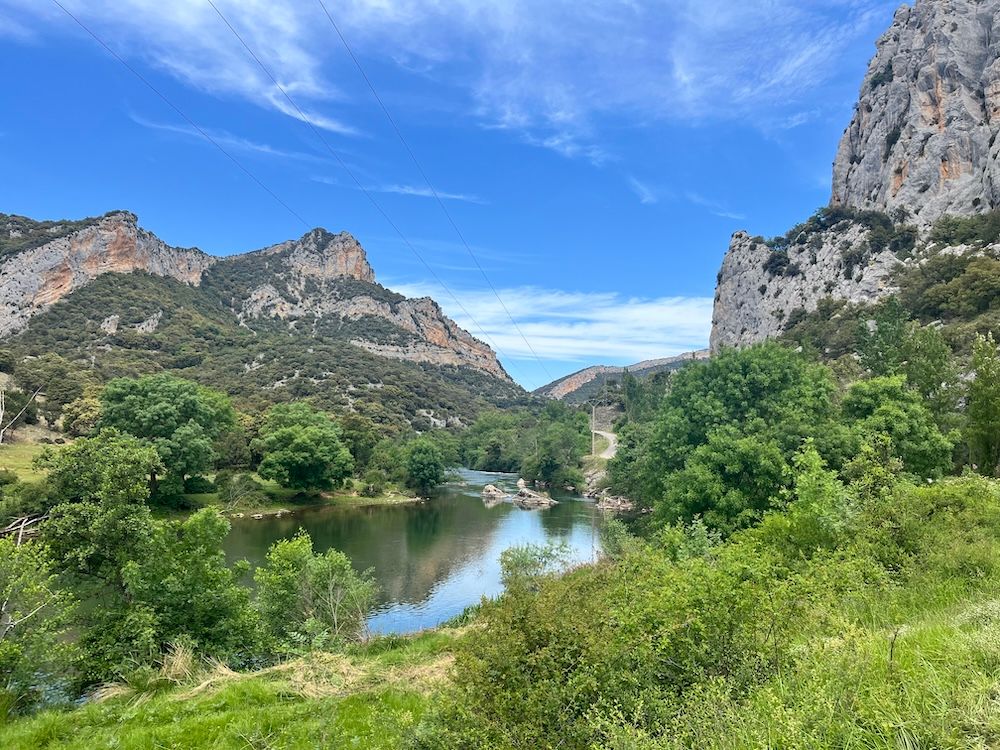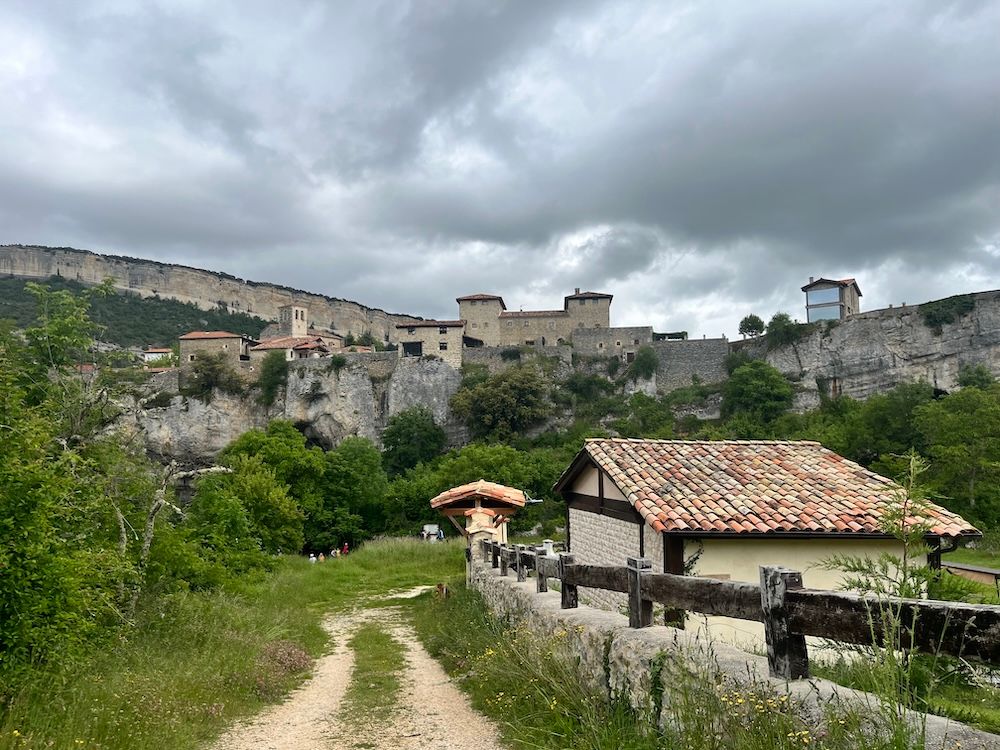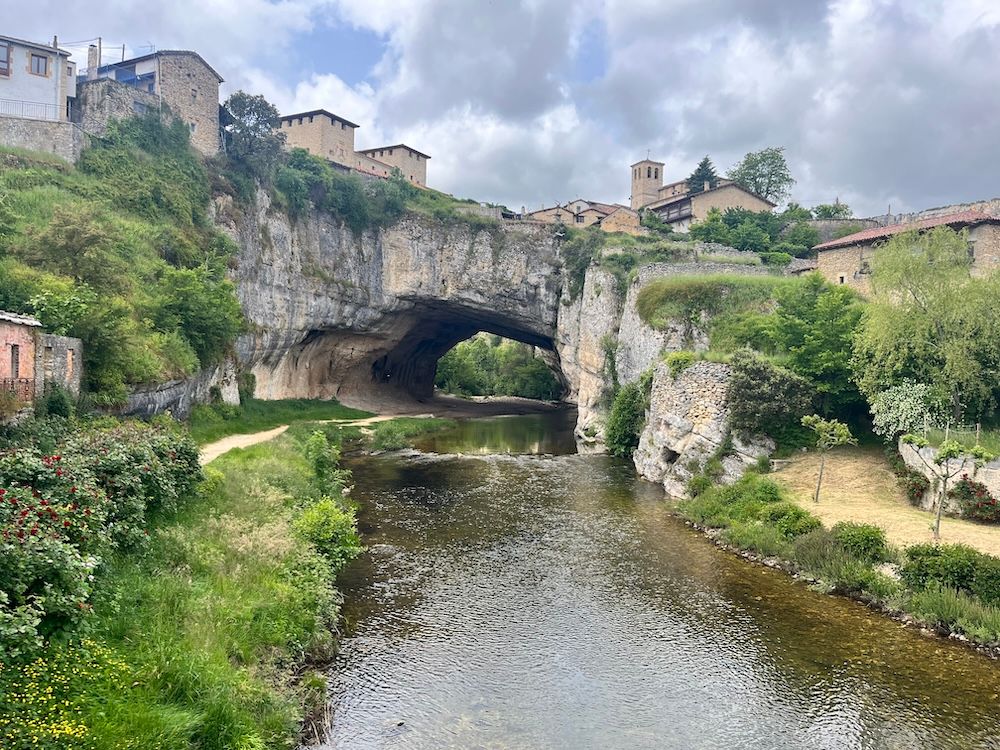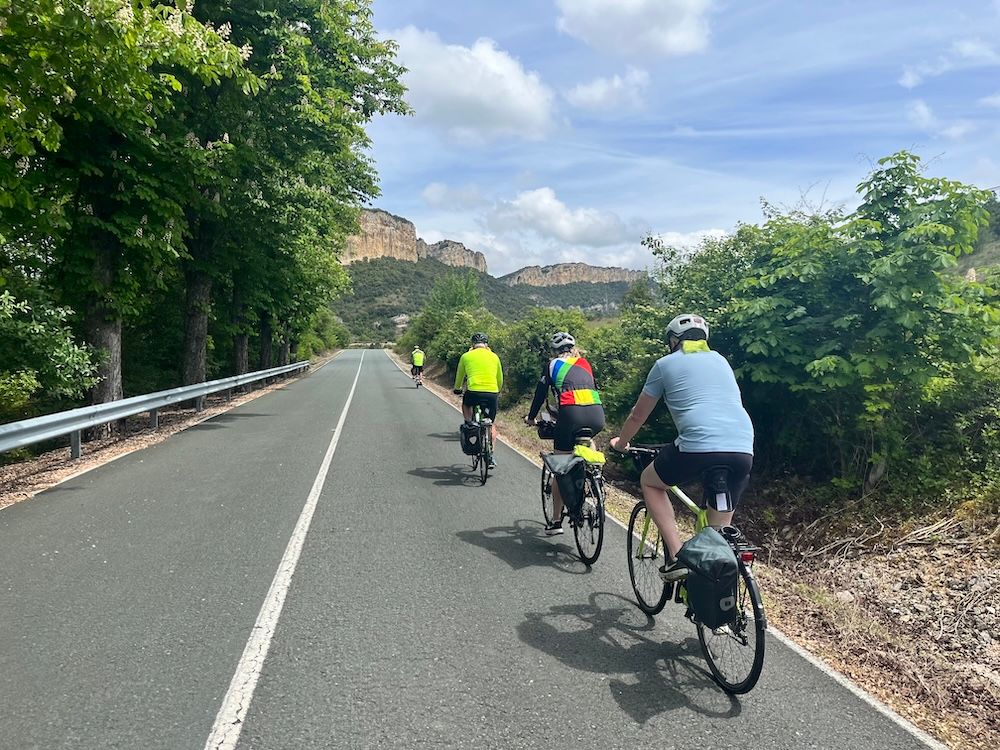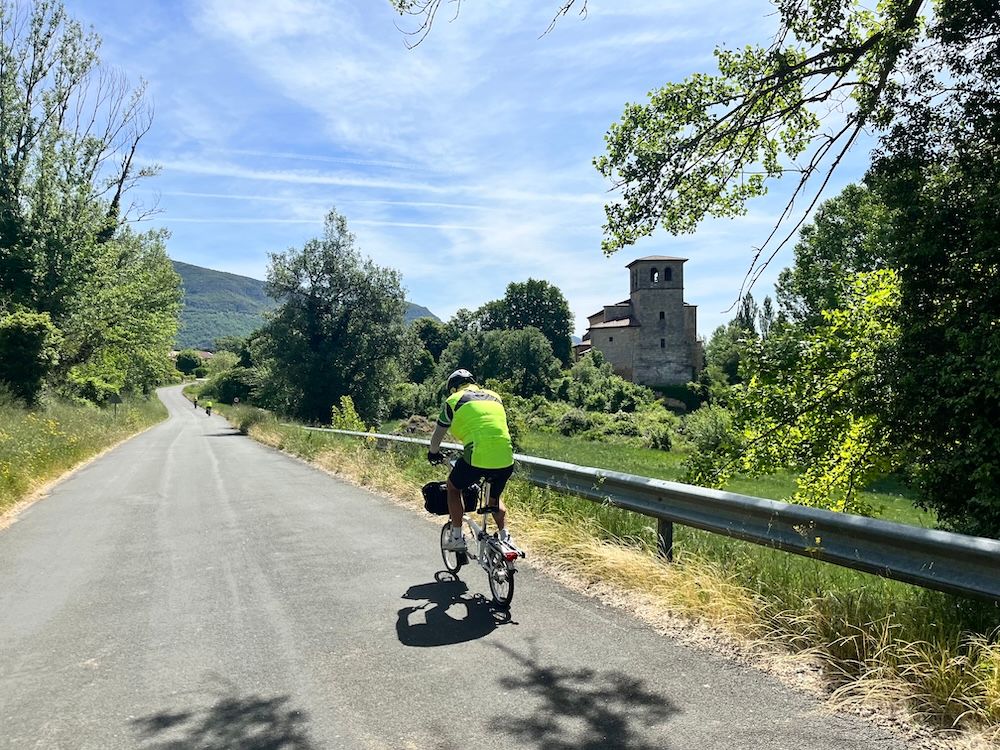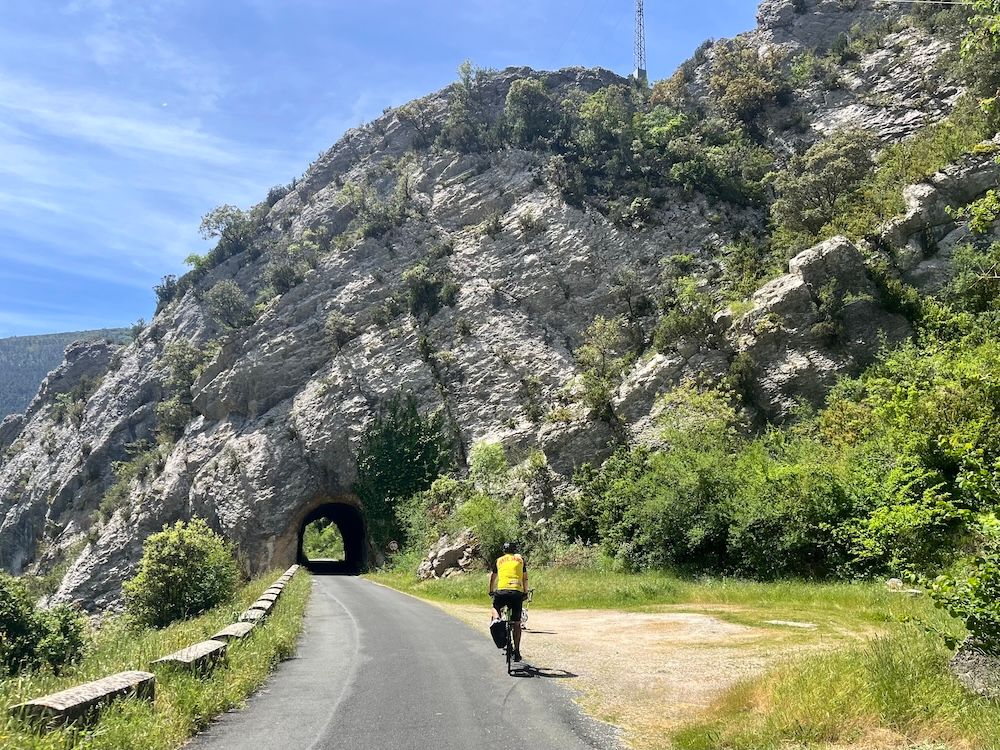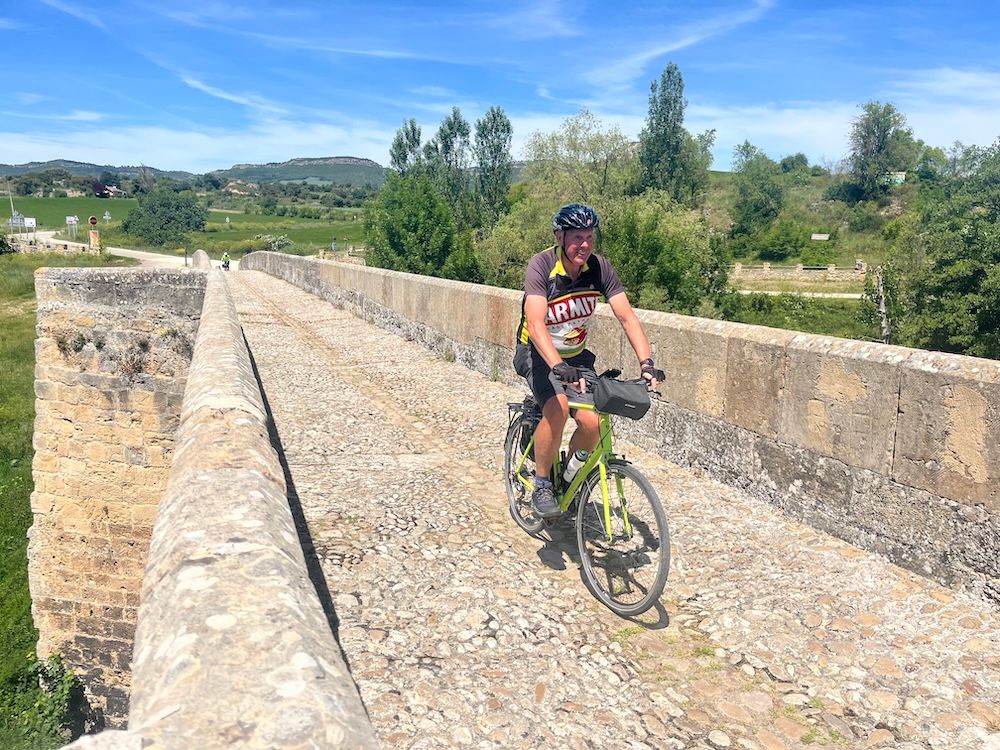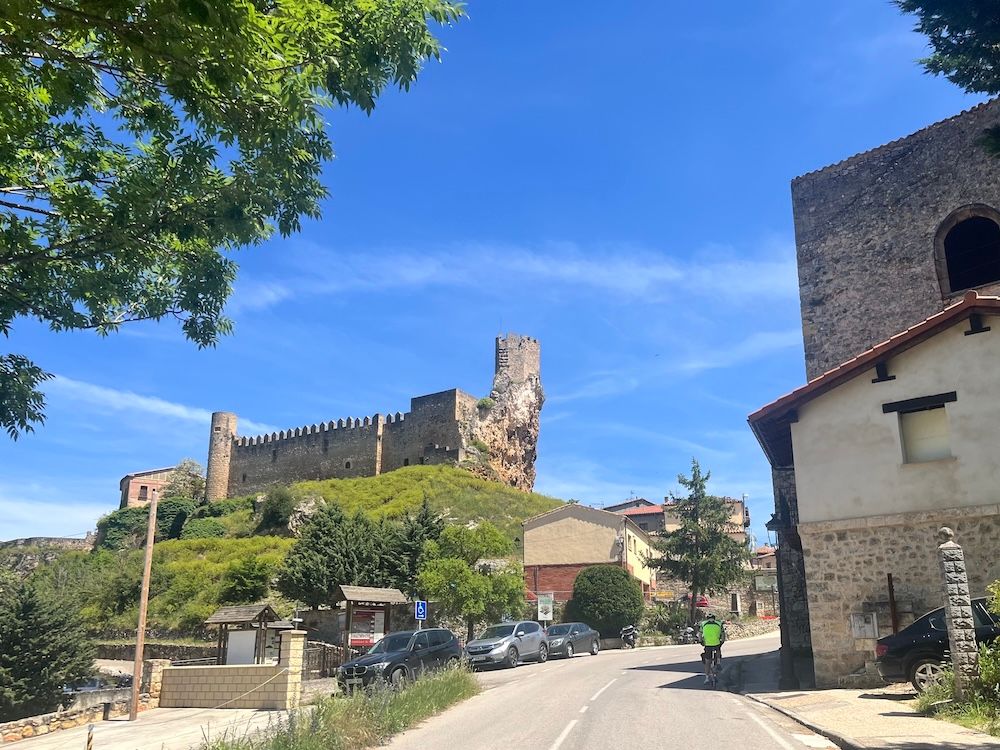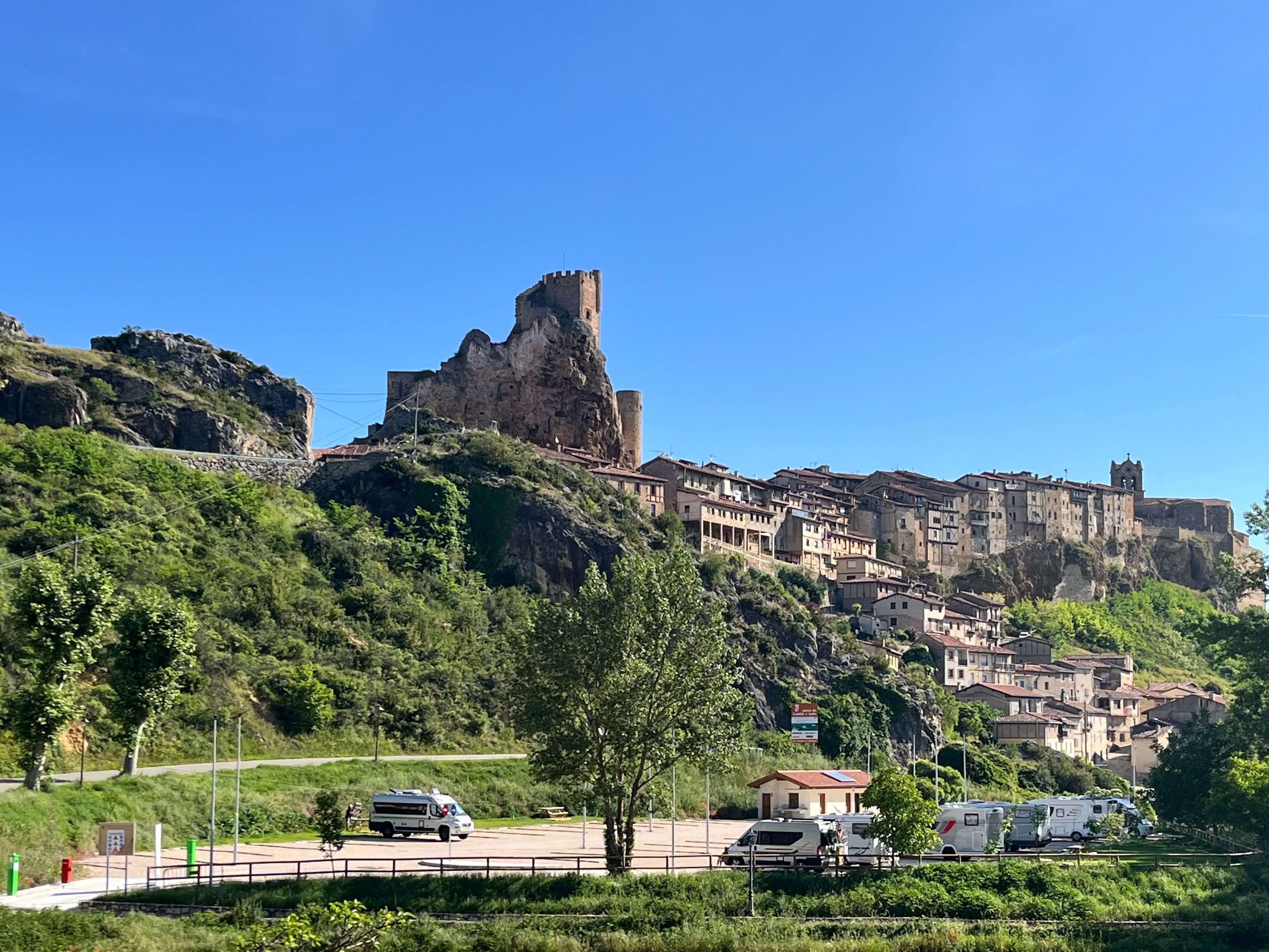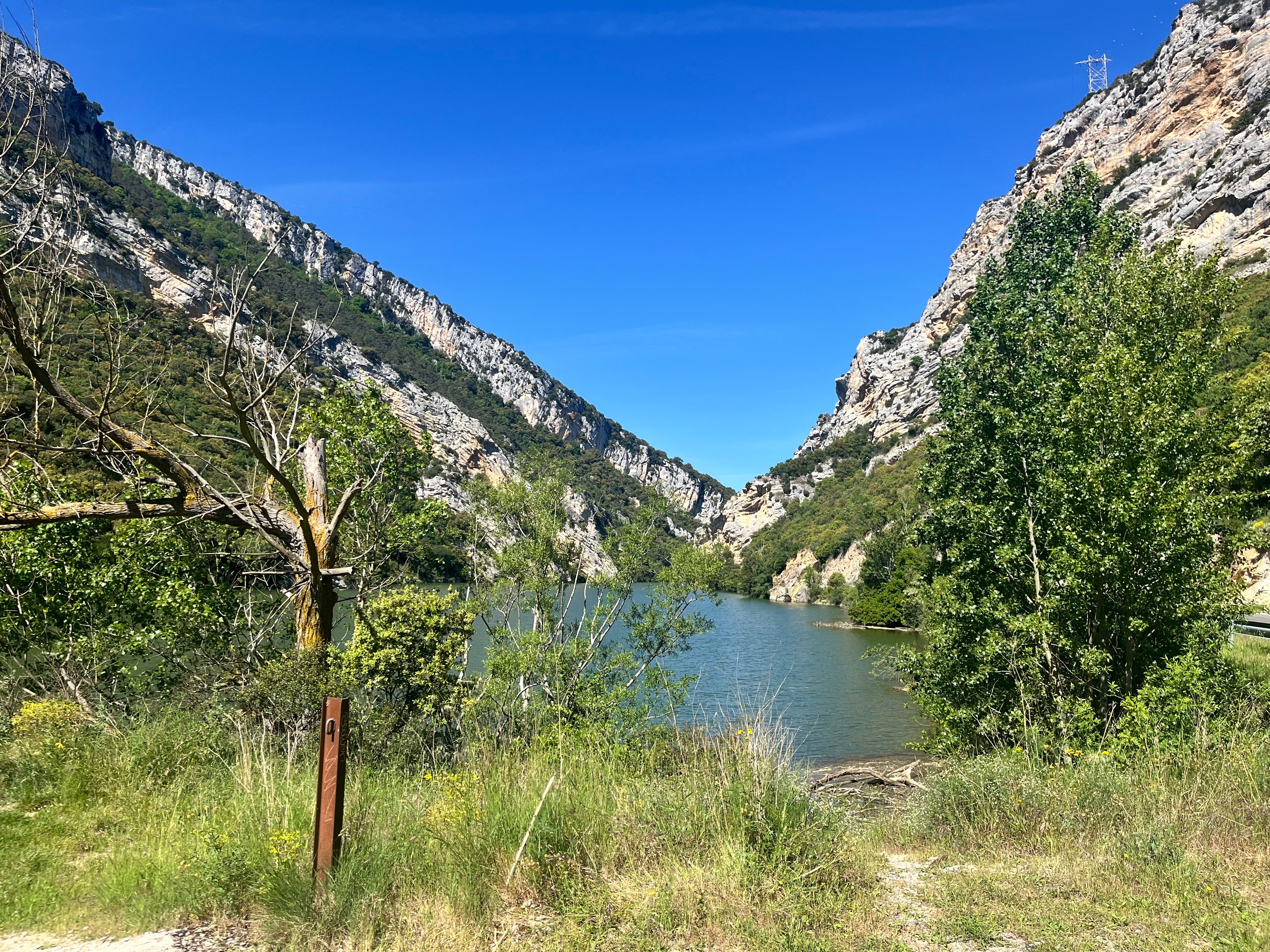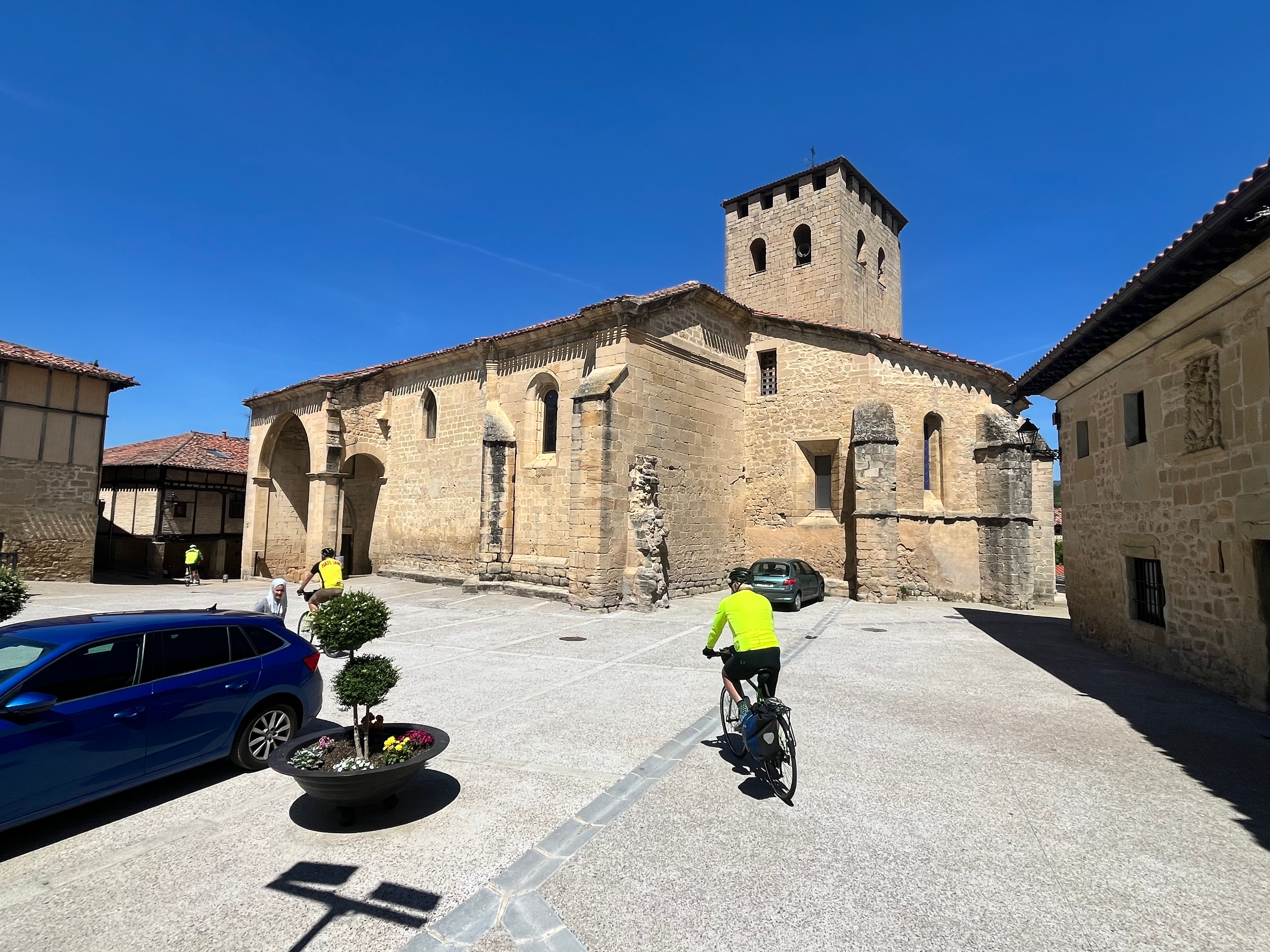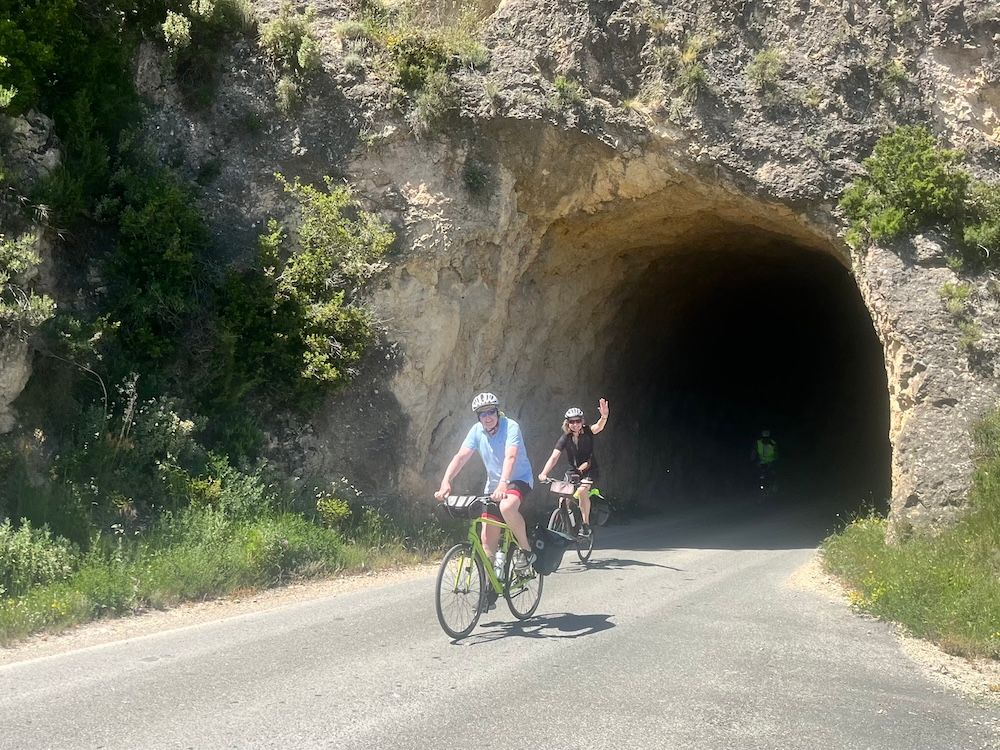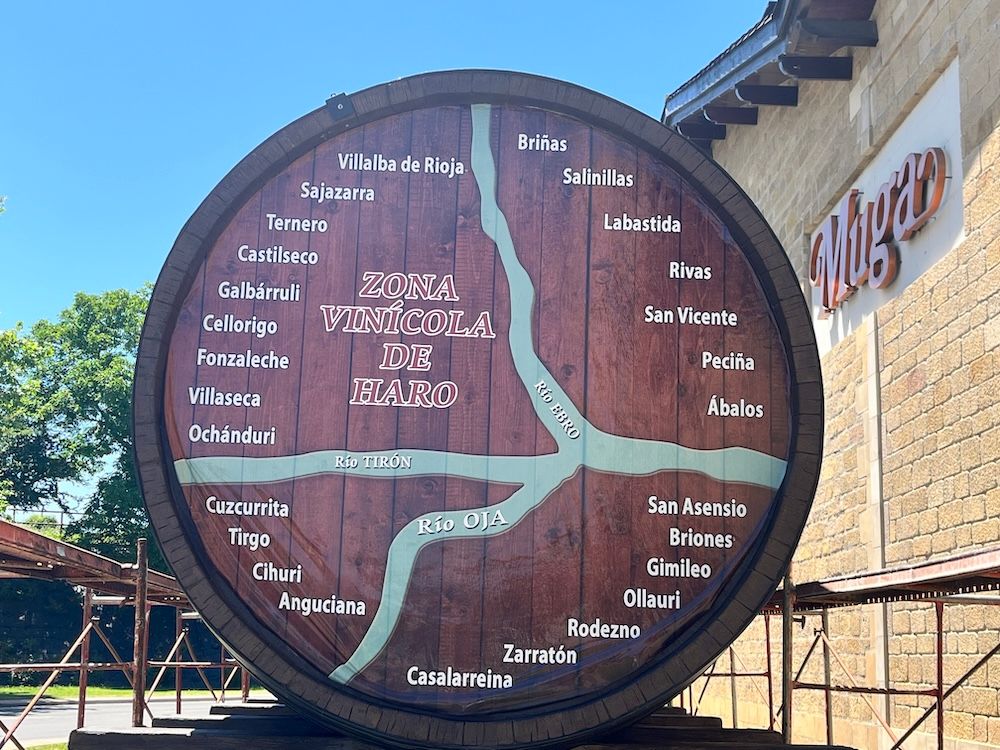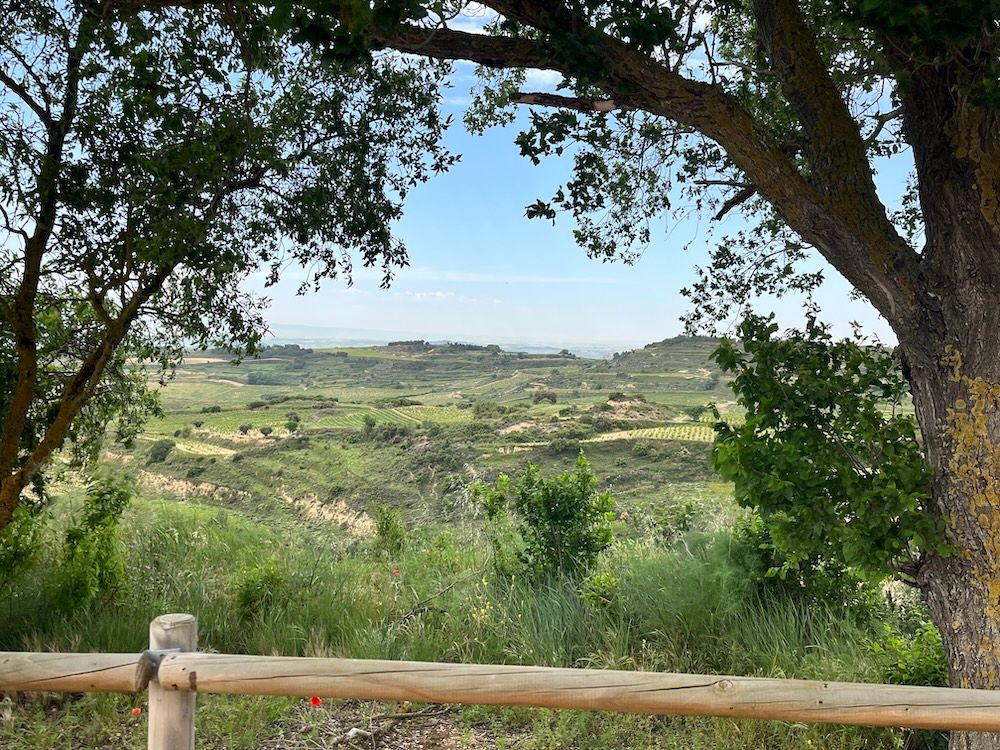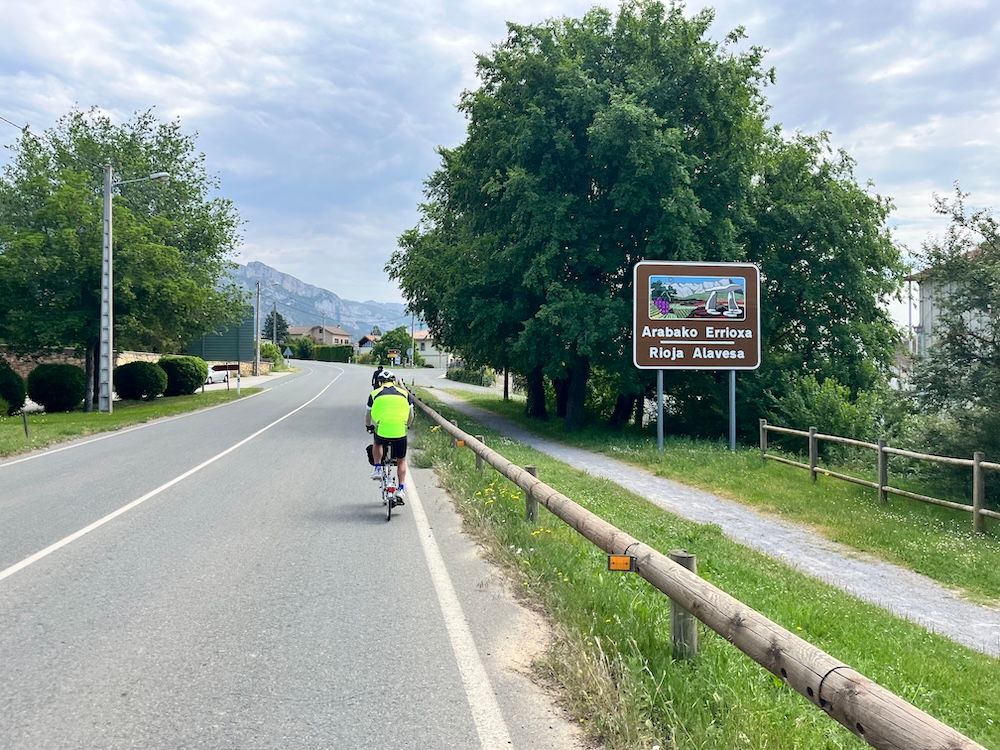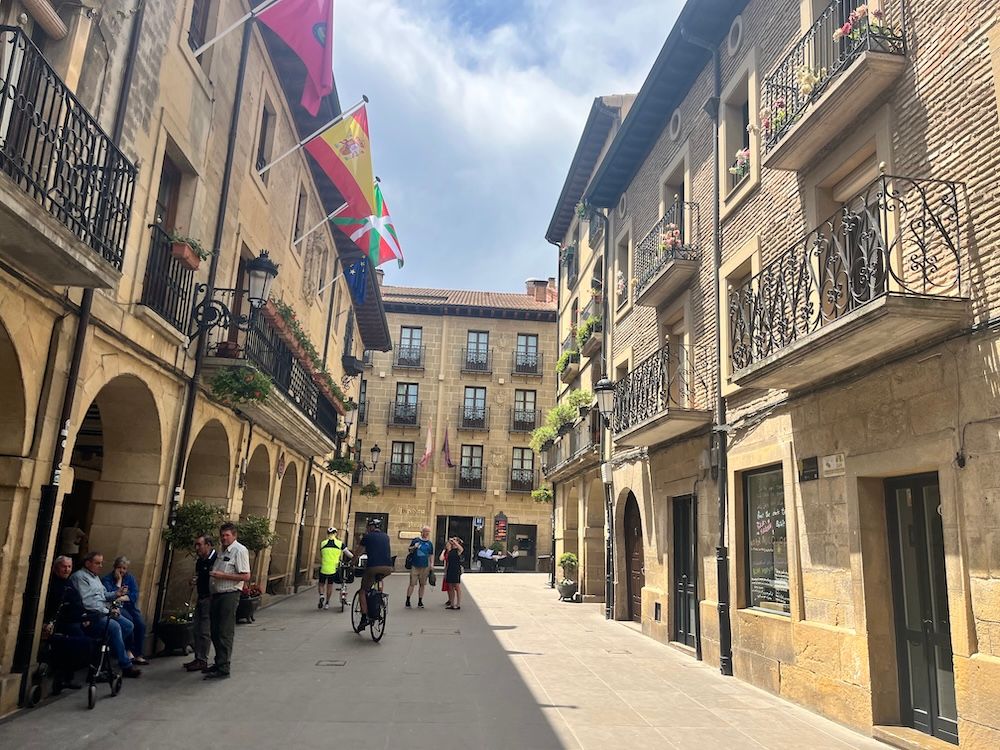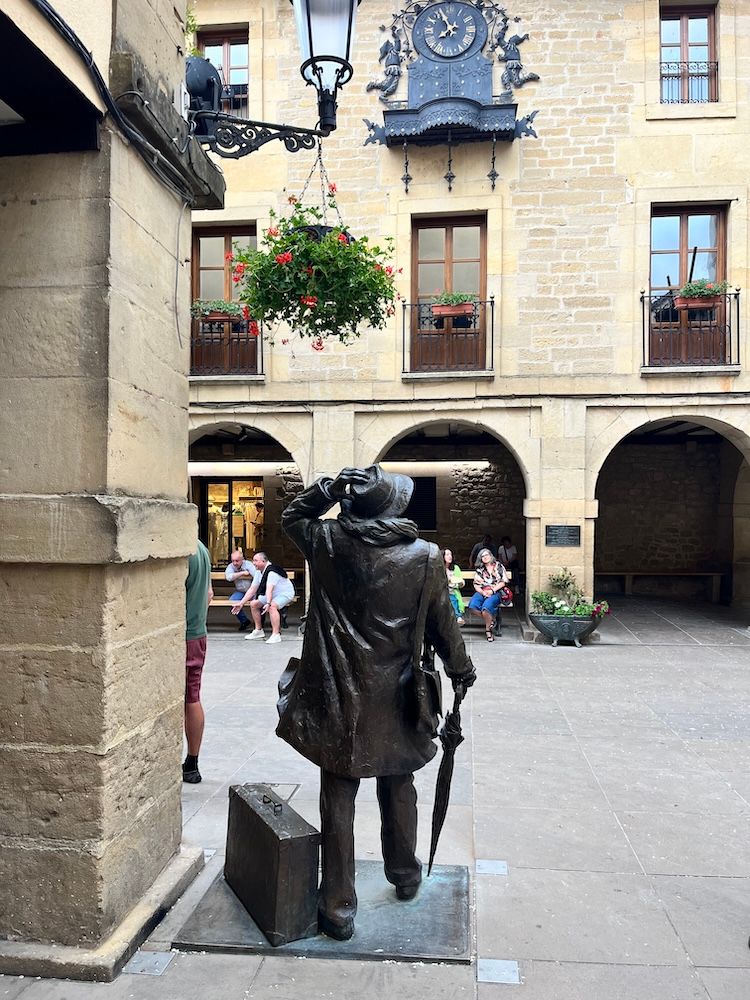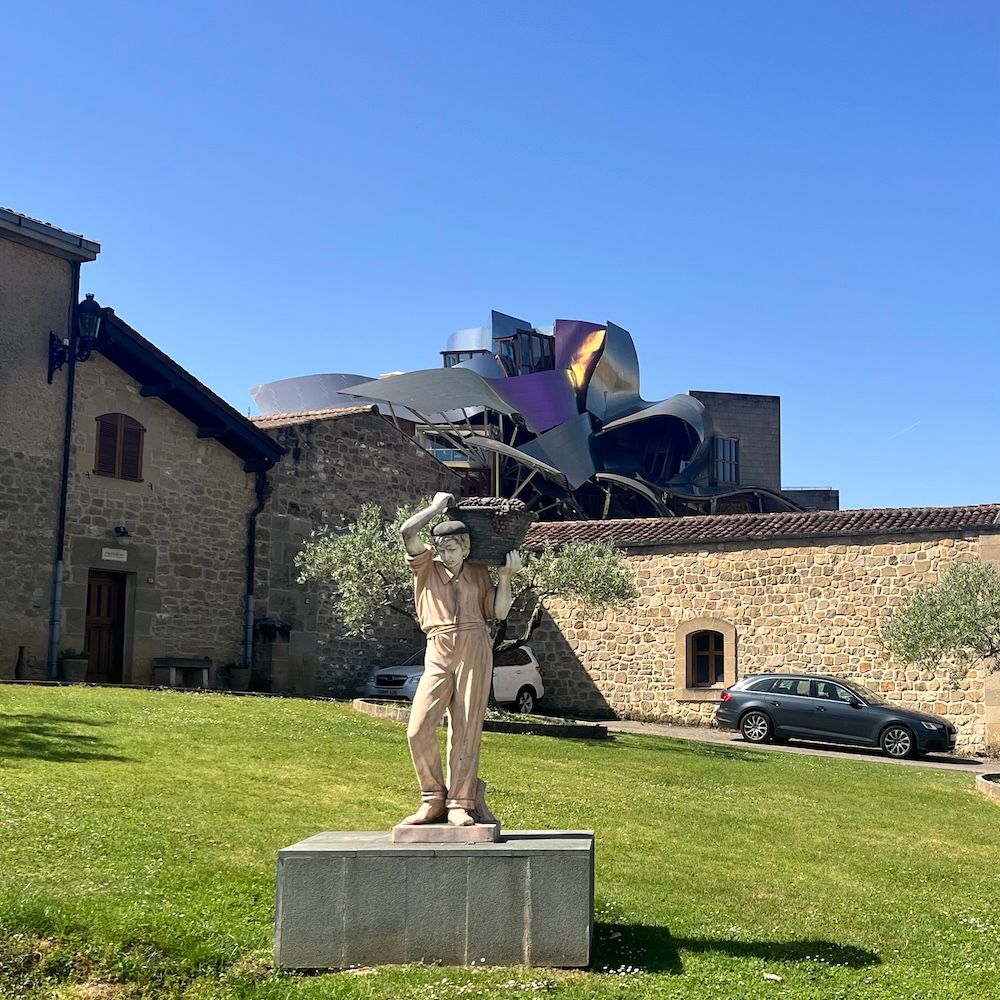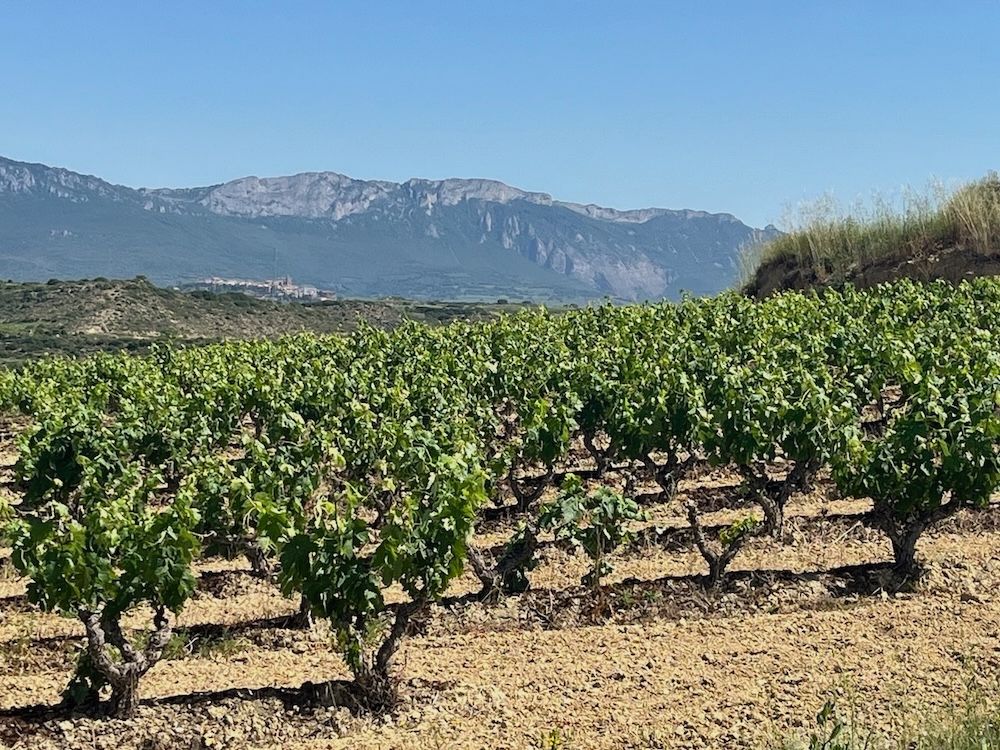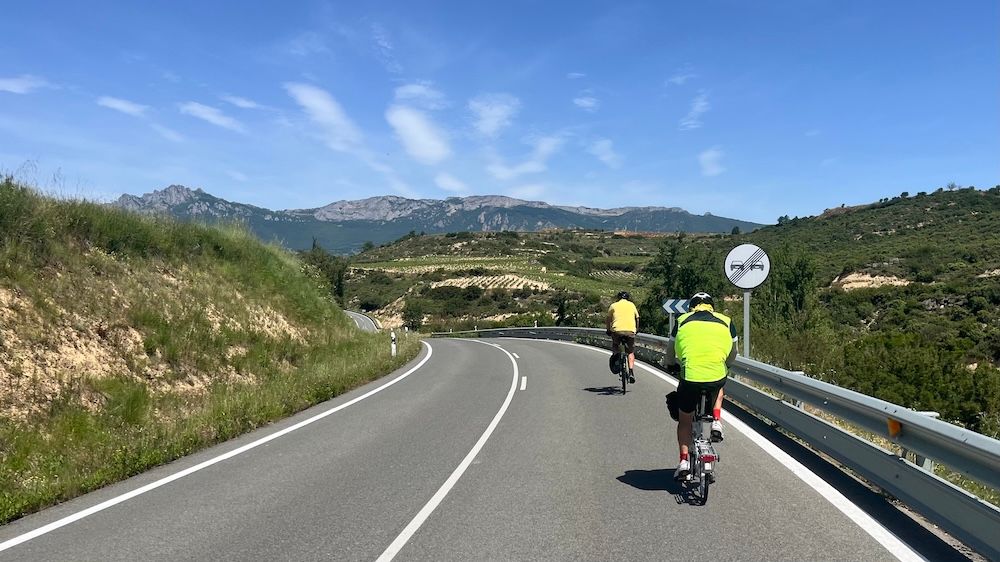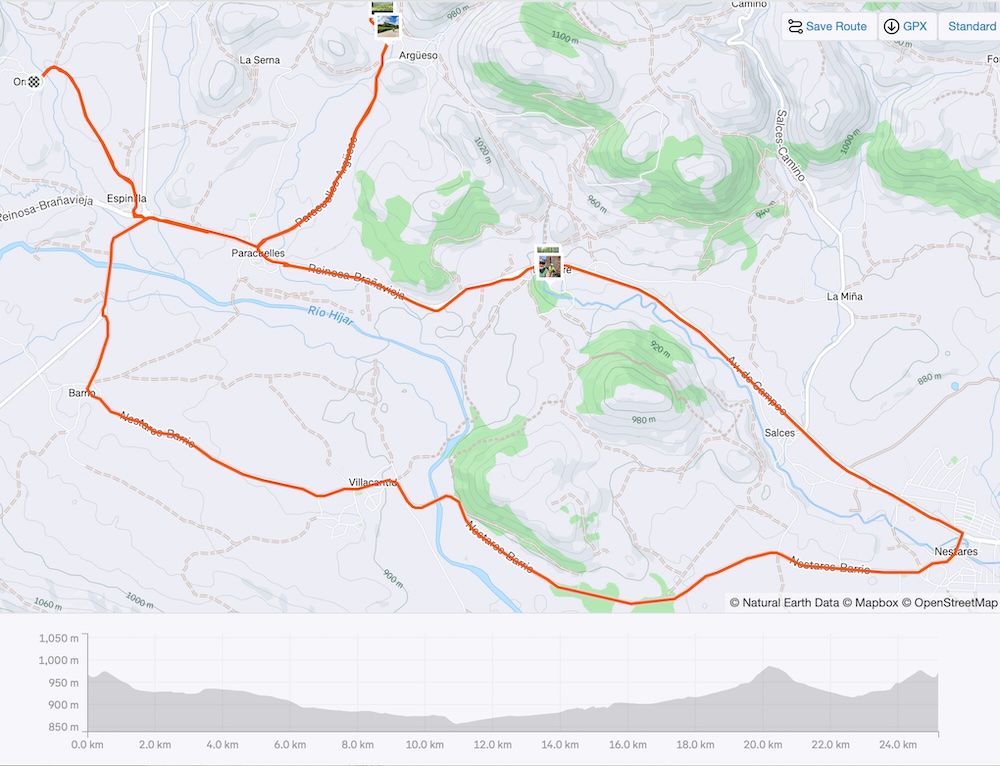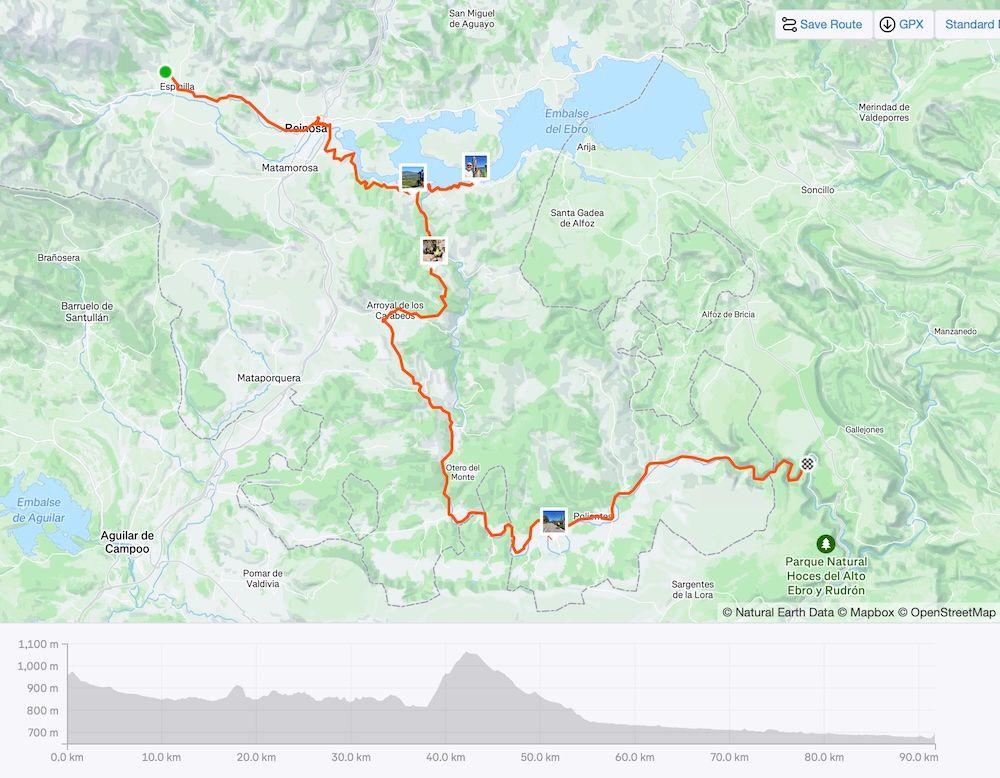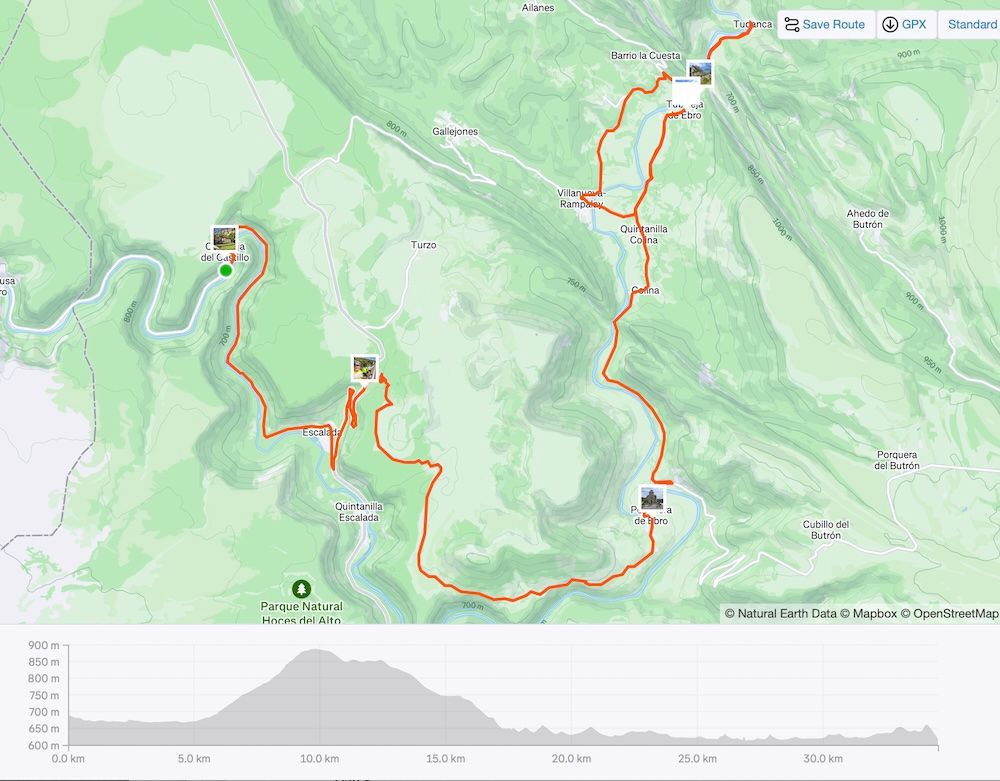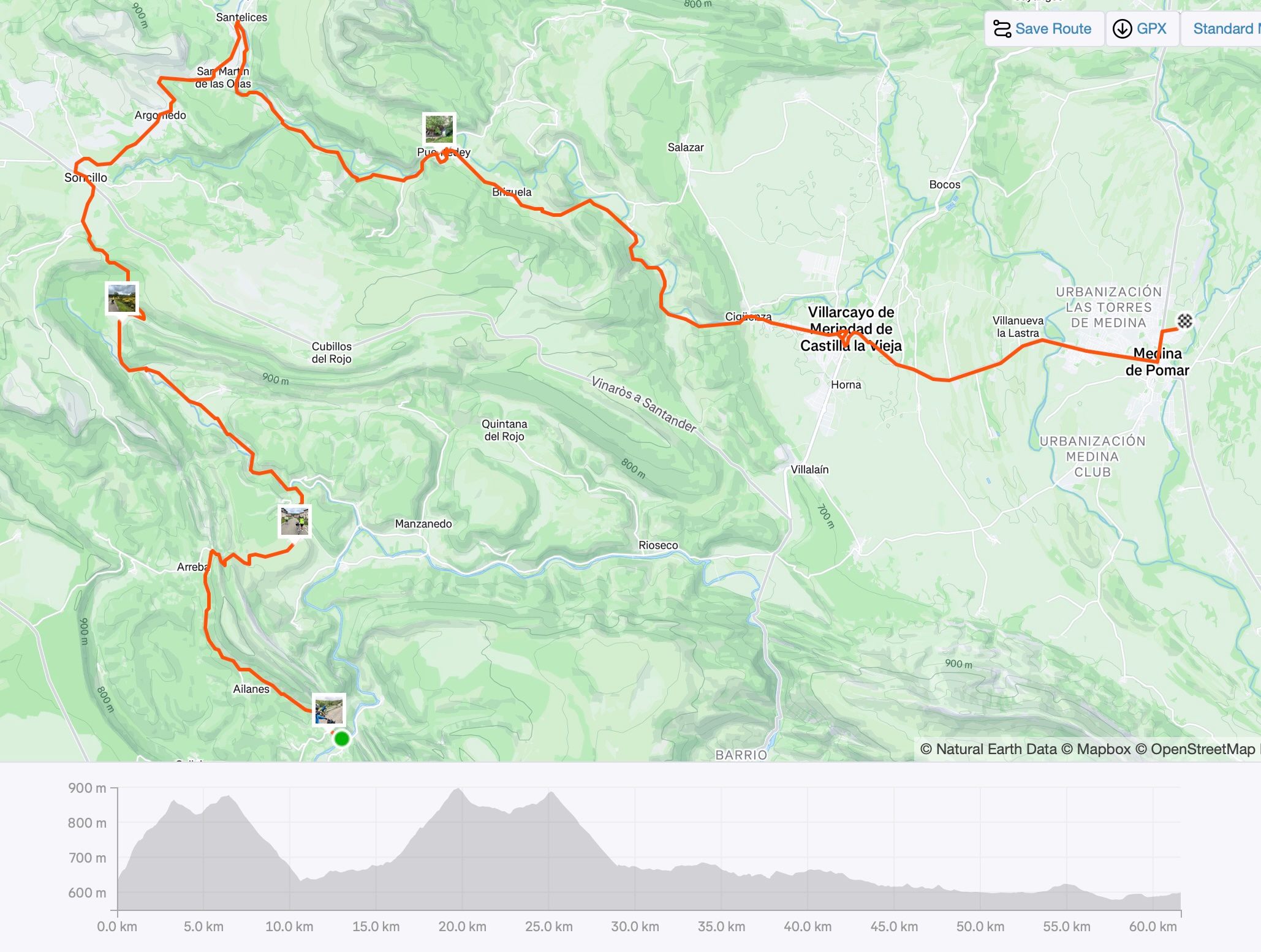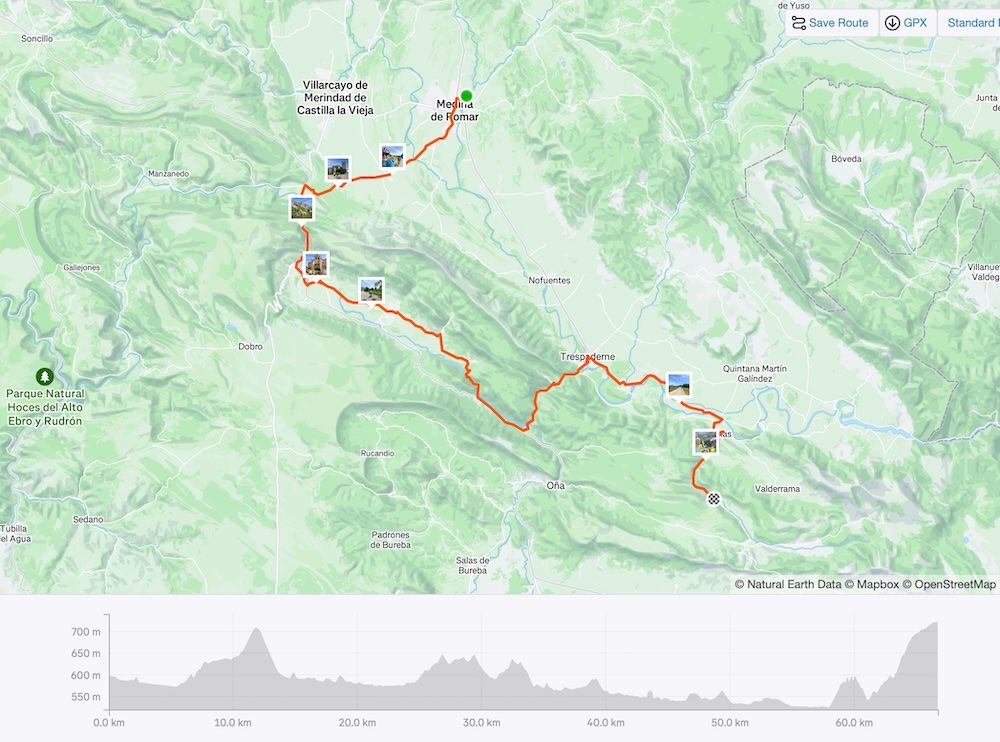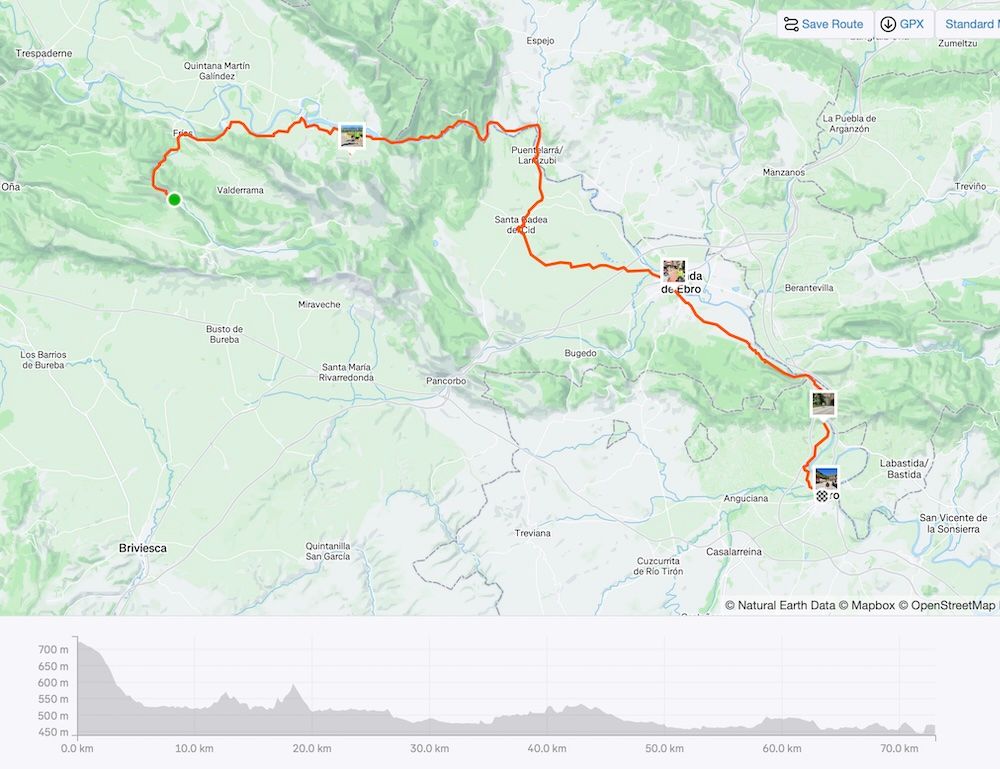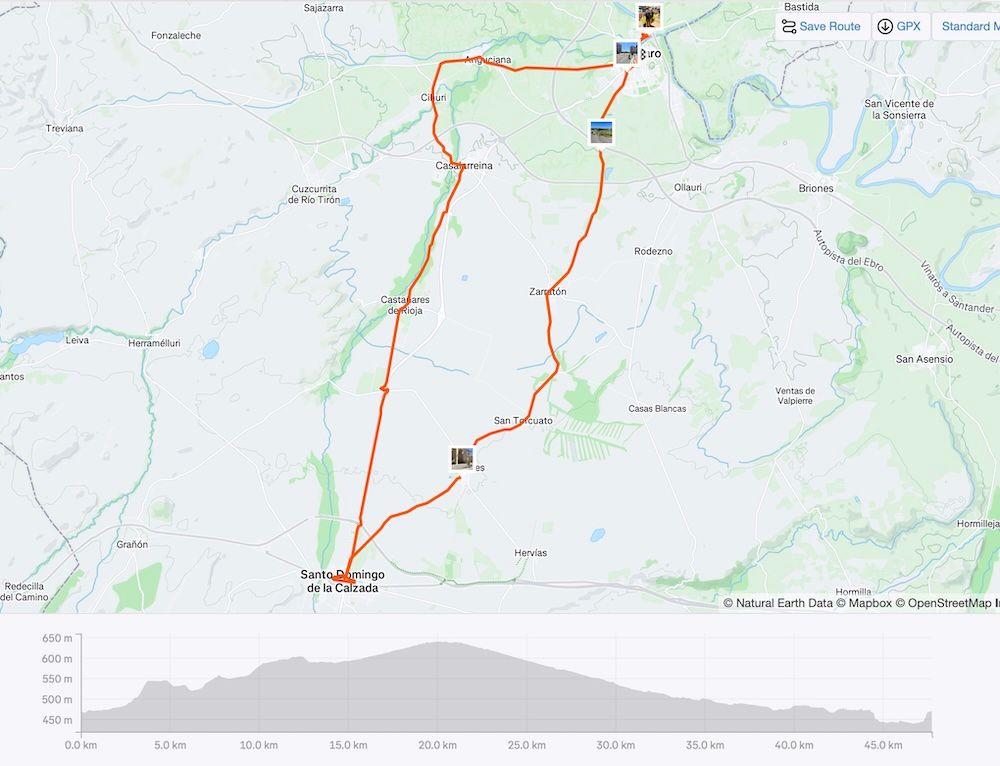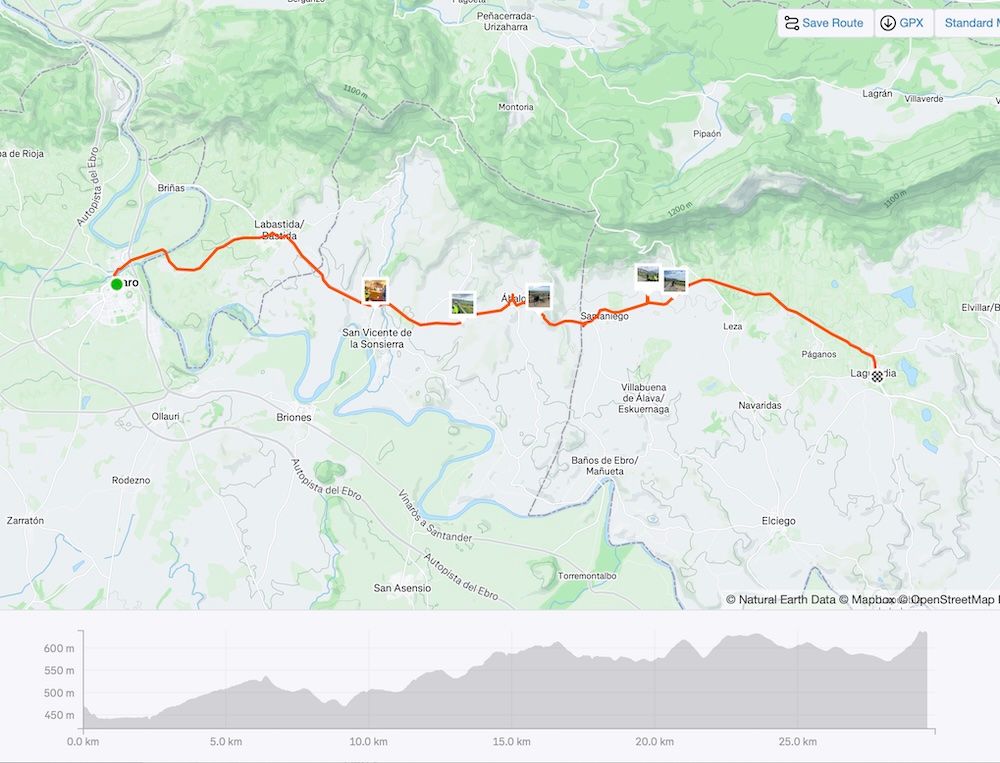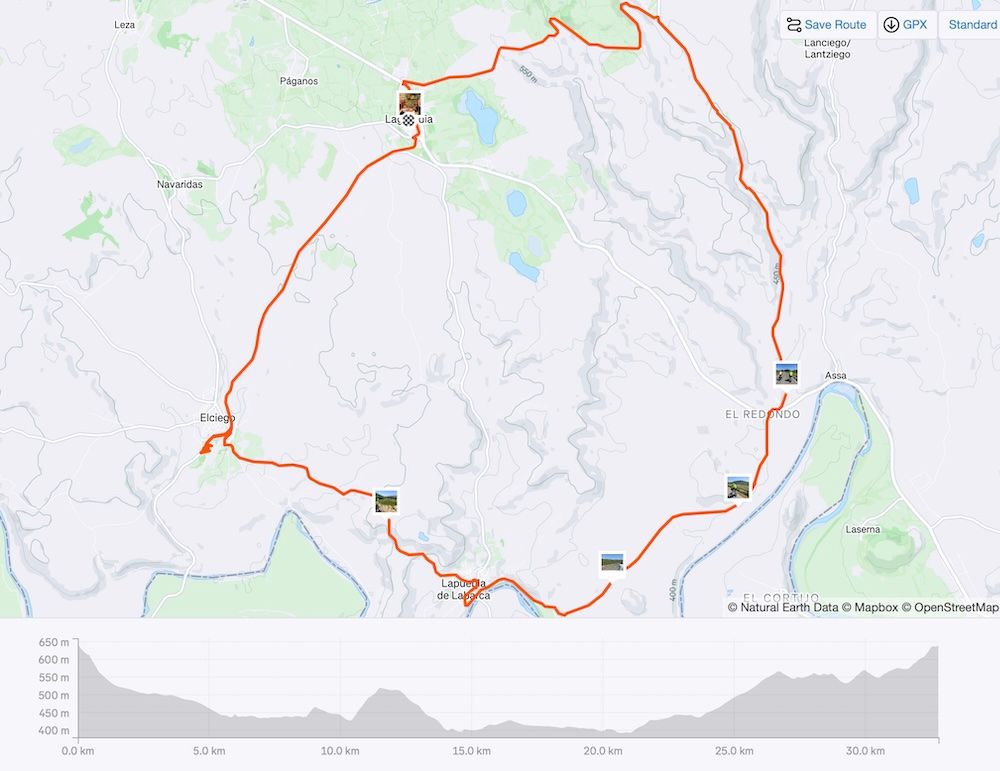From the source to Rioja: Descent of the River Ebro
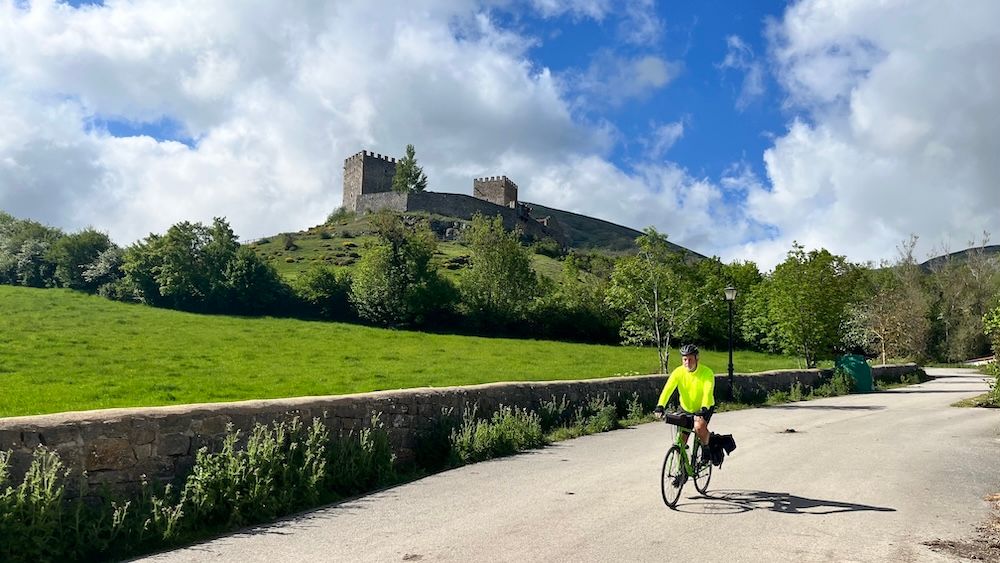
Bruce Robertson
This region is the heart of ‘Green Spain’ with the weather more temperature than further south. The weeks and months before our tour had apparently been very wet and the countryside was particularly lush with many shades of green. Fortunately for us the rain had passed and given way to spring sunshine!
Mornings were still a bit chilly at first but the days warmed up. Later in the week daytime temperatures reached the low 30s (°C) which was unseasonably hot for this part of the country. This brought its own challenges, but fortunately coincided with lower distance riding days and more rest and respite options - including bars and wineries!
Still being spring, wildflowers were blooming all over to add to the colour palette. There were swathes of bright yellow broom interspersed with purple orchids and white and blue flowers I couldn’t identify. A little lower down the valley, the broom was replaced by myriad crimson poppies growing in fields and along the roadside.
Our tour was labelled a ‘descent’ but, although it is true that our end point was at a lower altitude than the start, the tour was by no means flat or downhill all the way. There were some fabulous descents but also many climbs of different gradients. This variety certainty made the tour very interesting, sometimes challenging, but also allowed for amazing views and scenery. Unlike some rivers there wasn’t a riverside path and the Ebro was often out of sight and sound range. Occasionally we were closer to tributaries such as the Nela, the Trifón and the Alavesa. The roads often crossed from side to side but the route selected by IberoCycle mostly avoided major roads and was little frequented by cars. A pleasant surprise was how well drivers respected cyclists and gave plenty of space and distance when following or passing. Unfortunately I can’t say the same about the motorbike riders that use these quiet roads as their personal racetracks.
The route was slightly altered from the standard tour due to availability of accommodation and food, however the tour notes were thorough enough to allow for this, as was the ride guide, so navigation was spot on. The tour used the excellent RidewithGPS app but we were also given a printed road book and route guide with cue notes.
Our group of 4 took up the option of adding a couple of extra nights in Rioja as we wanted to do some winery visits and tastings. Additional loop ride routes were added to the app for us – with a list of wineries to consider. So although this was a self-guided tour, there was little planning required on our part - other than to and from the ride pick up and drop off points - in our case Bilbao.
Accommodation was excellent throughout, especially surprising in some quite relatively remote locations. A good breakfast was provided by the hotels each day allowing us to get on the road as early or late as we liked. Lunches were on the road and where we were pre-warned there were no suitable options en route a packed lunch was arranged. Dinner was included on the first 5 nights - simply because there were no real alternatives until we reached the busier Rioja region. The included dinners (including wine) were all amazing, mostly local specialities, ranging from a very extensive menu to a fixed menu (you’d need to advise beforehand if you had special dietary requirements).
Day 1 - Arrival
Ignacio picked us up from our accommodation in Bilbao - which had been hard enough to secure due to the Europa Cup final the day before!
On the way to our first tour hotel we stopped at the Iberocycle Office near Santander to collect the hire bikes and then travelled across the mountains to tiny and remote Ormas, albeit in a spectacular setting.
An optional easy 24km loop was offered to us in the app - and gladly accepted, despite a headwind one way and a few ups and downs. A nice introduction to the longer cycling days ahead. There was a nice diversion to a 15th century hilltop castle and also to the source of the River Ebro in Fontibre, where we found a lovely bar to enjoy beers in the afternoon sun and spend time with an Irish couple who were doing the same tour, and with whom we enjoyed much cycling and socialising over the following week or so.
Day 2 Ormas to Orbanejo del Castillo
There were a couple of options for the day. We chose the shorter one, to mostly the follow the river directly to our end point - the longer version circumnavigated the Ebro Reservoir. However, and including a diversion out to Las Rozas de Valdearroyo to see the partially sunken church, this was still our longest day in the saddle.
There being no food options on the way we ate our picnic lunch at the Monastery of Montesclaros, followed by more cycling through some fabulous and unspoilt scenery of green mountain pastures and forests of the Cantabrian Mountains, to finally rejoin the Ebro in Valderredible. The sides of the valley begin to close in until we found ourselves in a marvellous canyon of ever-increasing dimensions, where eagles and vultures soar overhead. Then a final climb surrounded by towering limestone cliffs to the absolutely stunning fairytale village of Orbanejo del Castillo.
Day 3 Orbanejo del Castillo to Valle de Zamanzas
Due to many photo stops, including the beautiful waterfall and cascades running through the village, we slowly cycled out of town. Being still at a fairly high altitude the views in the Valle de Sedano were magnificent. A coffee (beer) stop in picturesque Pesquera de Ebro, followed by a diversion out to tranquil riverside Tudanca, and a loop ride UP to our quite isolated hotel in the Valle de Zamanzas, meant we had most of the afternoon to relax before another delicious home cooked meal.
Day 4 Valle de Zamanzas to Medina de Pomar
The day started with more spectacular views, this time over the Valle de Manzanedo, and through pristine but ghostlike San Miguel de Cornezuelo. We also opted to follow a route closer to the Ebro tributaries of Trífon and Nela, rather than the main river itself. This took us through Soncillo and the dramatic village of Puentedey (one of ‘Los Pueblos más bonitos de España’ – the prettiest villages in Spain), built on a natural rock bridge over the River Nela. We rode out through the town of Villarcayo and onto our hotel on the edge of the Castilian town of Medina de Pomar with its old Jewish quarter and the castle dominating the town and the surrounding landscape.
Day 5 Medina de Pomar to Frías
From Medina, we head back to the Ebro through the village of Bisjueces with its impressive church of San Juan Bautista. The route then took us along a quiet country road running parallel to the river where the valley begins to open out again. We rode past the Romanesque church of San Pedro de Tejada, near our coffee stop at Puente Arenas, and soon through yet another canyon, which then opens out into the fertile valley at Trespaderne, with its stunning ‘Portuguese’ rock caves, and Frías, which we approached across the (optional) old cobblestone bridge. The latter is a spectacular hilltop village built around its castle and enjoying impressive views of the Ebro Valley.
Day 6 Frias to Haro
Another beautiful day, we left Frías amidst poppies through another spectacular canyon, the Valle de Tobalina, alongside the river and reservoir surrounded by high mountains and through short tunnels carved out of the rock. Passing by the Monastery del Espino we entered medieval Santa Gadea del Cid and checked out the historic church and semi-ruined hilltop castle. Shortly after, we reached the town of Miranda del Ebro before passing through imposing peaks that signal the gateway to the enormous open valley of La Rioja. Wine-producing Haro, the self-proclaimed ‘Capital del Rioja’, was our home for two nights.
Day 7 Loop ride from Haro
Although riding was optional - wine wasn’t - we followed the ride suggested by Iberocycle in the app. It was a loop ride to Santo Domingo de la Cazado which was mostly flat and quite easy as we started early – ideal on a hot day that got into the 30s (C). Santo Domingo was an interesting and pleasant town with more pilgrims than wine – it was on one of the more popular Camino de Santiago routes.
The closer we came going back into Haro, the more wineries or bodegas along the way. So of course we had to imbibe, and called into Bodegas Muga to enjoy a flight of their wines. Dinner again was on our own but there were plenty of great choices in town.
Day 8 Haro to Laguardia
We cycled through endless vineyards and numerous picturesque villages of La Rioja, with the backdrop of the Sierra de Cantabria mountains and the Ebro never too far away. There were a couple of bodega stops on the way – because why not. Although we reached Bodaga Ramirez at 10.20am the wine was good, and it was a short day in the saddle. After an early lunch at Bodega Ostatu we headed for Laguardia. Bodega Rothschild we thought might be worth cycling up to but, despite the great views, they weren’t open to a visit from some random cyclists.
We finally reached the superb walled – and hilltop! - medieval village of Laguardia where, as in Haro, wine is almost a way of life.
As it was only early afternoon there was plenty of time to relax and enjoy at least some of what this beautiful town had to offer, culture, views and great food & drink.
Day 9 Loop ride from Laguardia
Our final day of cycling was yet another under clear blue skies with very warm weather. As it was Saturday there were lots of cyclists out for their weekend ride. Iberocycle had a nice 33 km loop ride mapped out for us following fairly quiet roads. It was an undulating route with the highest point being Laguardia.
After a lovely descent, the morning coffee stop was in pretty Elciego, home of Bodegas Marqués de Riscal (amongst others). What made this winery stand out was the stunning titanium and pink-gold building designed by Frank Gehry – who is better known for the amazing Guggenheim Bilbao which we would visit the next day. I believe the wine is good too but it was a bit early in the day!
Unfortunately Elciego was also the site of our only incident with the bikes. Paul’s chain snapped and despite the telephone assistance from Ignacio, a replacement wasn’t easy to procure here so Paul resolved to get a taxi back to Laguardia (which Iberocycle organised).
The rest of us continued along the quiet roads with vineyards all around. The road followed the Ebro River to Lapuebla de Labarca, a classic wine village surrounded by neat terraces of vines. It was a good spot for some lunch. The village hosts the annual “El Pisado del Vino” festival (wine stomping) in February, but even outside that time it is worth a visit.
After rolling down along the park we left the river for the gradual climb toward tiny Villabuena/Bilar – which apparently has more wineries per inhabitant than anywhere else in the world! Continuing the climb it was a short ride back to Laguardia with views opening out beautifully across the valley - a fitting finale to the tour.
Day 10
The transfer from Laguardia to Bilbao was at 9 a.m. and went smoothly as planned. This was certainly a town I could have spent more time in.
Our bike tour down the River Ebro offered a rich blend of natural beauty, cultural experiences, and cycling adventure. From lush green landscapes and vibrant wildflowers to historic villages and renowned wineries, each day brought new sights and memorable moments. The route’s variety - both in terrain and scenery - ensured the journey was as rewarding as it was challenging, with excellent support and hospitality throughout. Whether navigating quiet country roads or savouring local cuisine and wines, the tour captured the essence of northern Spain and left lasting impressions on all of us.
Route Maps
La Rioja - The Descent of the River Ebro
9.0/10 2 review(s)
Tour Operator: IberoCycle
Spain
8 days (Bike: 6 days)
356 km (~59km per day)
Active
Hilly, Quiet roads
Self-Guided
Semi-Supported
Prices from
Self-Guided
€ 1175
Overview
Tour Operator IberoCycle
A superb ride down the River Ebro from the Cantabrian Mountains to the Vineyards of La Rioja
A unique trip, following the River Ebro, the longest in Spain, as it flows from its source in the Cantabrian Mountains. It begins as a mountain stream flowing through green pastures and valleys, imposing canyons, vineyards, past pretty and unknown villages, As we cycle we perceive the changes in the landscape and the river itself. Finally we arrive in La Rioja, home of the finest Spanish wines. A sea of vineyards dotted with ancient villages, castles and wineries. A magnificent trip for those who wish to visit parts of Spain the tourists never see.
Highlights:
- fairytale village of Orbaneja del Castillo
- world famous vineyards and wine
- dramatic canyons of the Ebro river

